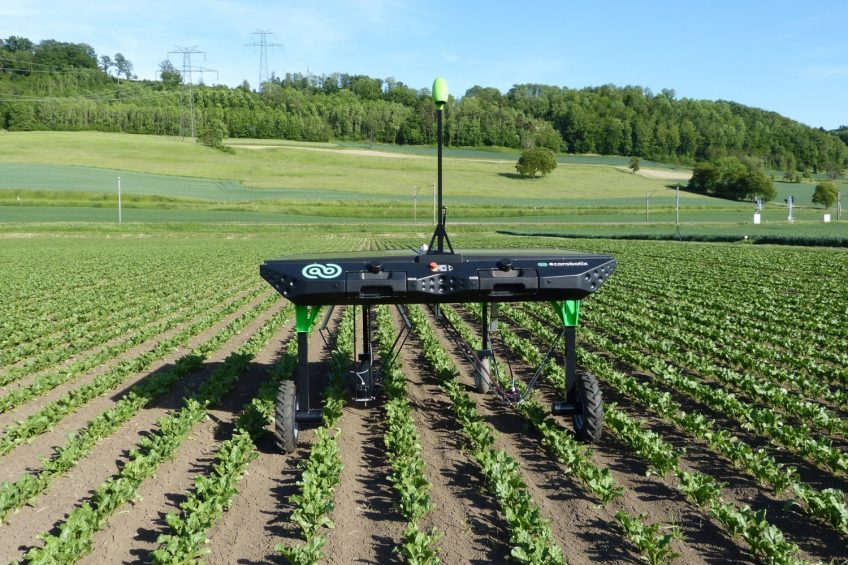ecoRobotix plans spot spraying robot for weed control

A Swiss technology start-up aims to help growers cut their herbicide bills by introducing a spot-spraying robot that targets individual weeds surviving an initial overall or band spraying treatment.
The autonomous self-propelled device from ecoRobotix has an array of photovoltaic panels to provide solar power for the 2 electric drive motors and equipment for navigation, weed identification and spraying. In ideal conditions, says founder and CEO, Aurélien Demaurex, the system can achieve up to 95% weed detection and destruction while using a minimal amount of herbicide through precise micro-dosing.
“Our vision is to contribute to the emergence of a form of agriculture that respects the environment, focusing on conservation of the soil and hydrological resources, and using a minimum amount of energy,” he says. “We will do that by developing innovative farming machines that require low energy and reduce the negative ecological impact of modern agriculture, while keeping costs competitive.”
The new light-weight robot – it tips the scales at just 130kg (286lb) – has GNSS navigation, a camera and artificial vision system to detect crop rows and identify weeds, and a spraying system that can be used to apply 1 or 2 individual herbicides. A pair of multi-link arms suspended beneath the photovoltaic cells move rapidly backwards, forwards and sideways to momentarily position a spray nozzle above the target weed. They will span 2m (6ft 6in) or 4 rows spaced 30-50cm (12-20in) apart, enough to cover up to 3 hectares (7.5 acres) a day at the machine’s 0.4 metre/second (1ft/sec) average speed, according to ecoRobotix calculations.
So far, the company’s engineers have produced detection and control systems suited to sugar beet and oilseed rape or canola but are developing software upgrades for other crops. A commercial introduction before the end of 2018 is anticipated.
Join 17,000+ subscribers
Subscribe to our newsletter to stay updated about all the need-to-know content in the agricultural sector, two times a week.



